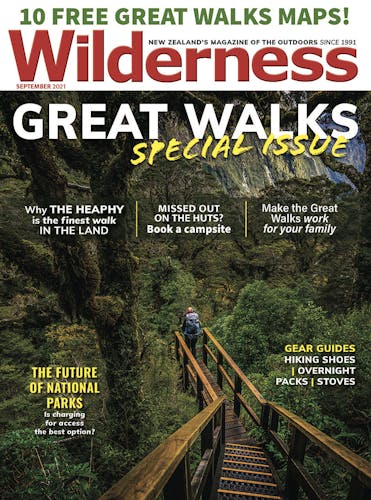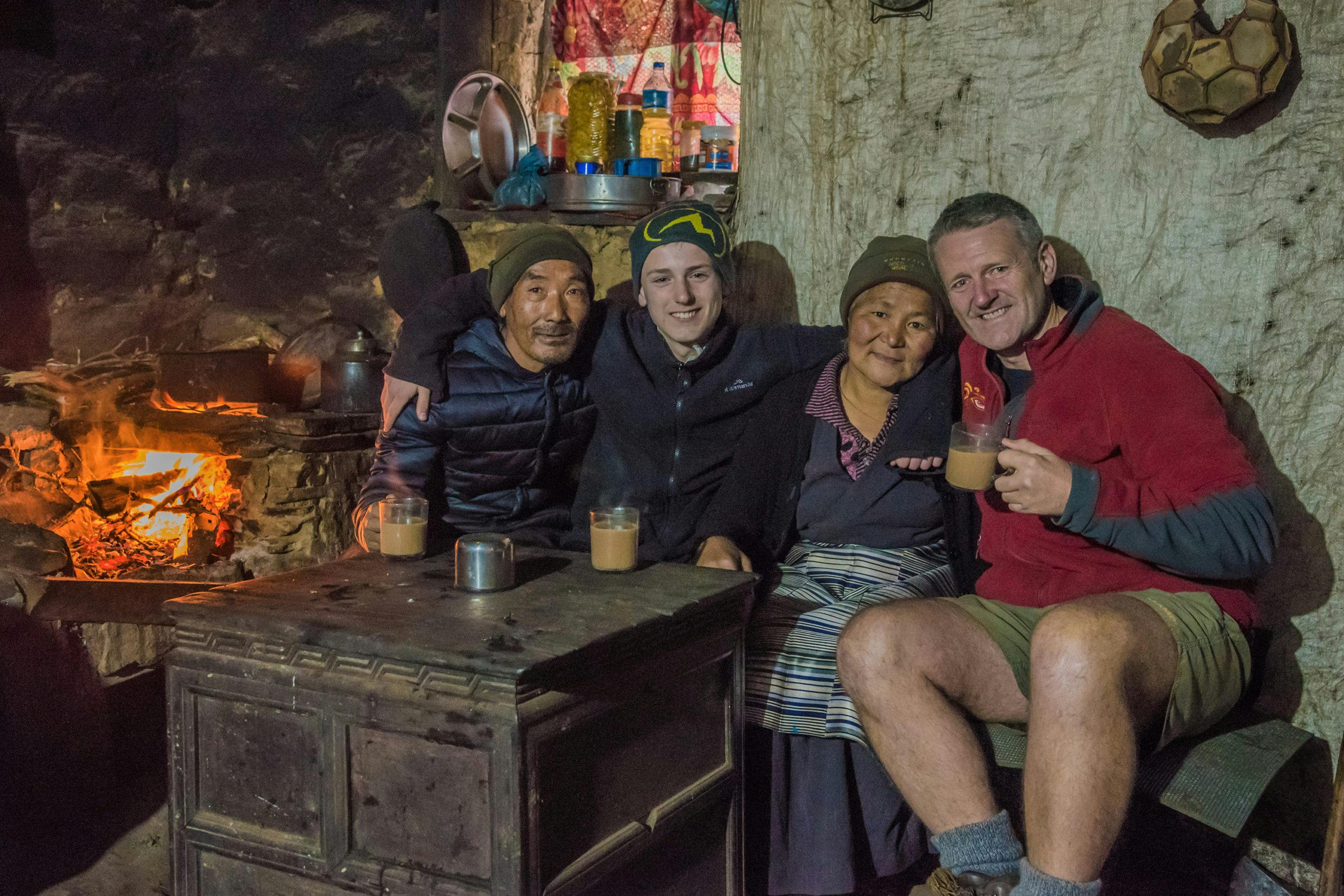Wellington tramper Peter Laurenson first visited Khumbu, Nepal, on his O.E in 1988. He’s since returned six times, forming a powerful connection with the region and its people. His adventures there – including a coming of age visit with each of his three sons – are detailed in his book Khumbu.
What were your first impressions of the Khumbu landscape?
Magnificent. It was on a scale I hadn’t really seen before. Getting into Khumbu was a revelation for me. It’s an absolute wonder. Massive sheer walls, fluted ice – it’s such a magnificent place. Very quickly what followed was a real fascination with the Sherpa people and their culture.
You wrote many times of Sherpa hospitality – what was that like to experience?
Their culture is very communal. We once got caught in a rainstorm and were barrelled into a stone house with a family. They weren’t wealthy, that’s for sure – they were cooking a dinner of potatoes covered in dirt, but when they served up dinner, we were first served. There was never any hesitation and that certainly made me feel humbled. We were these wealthy western travellers with all the flash gear, and these guys were just giving what they had and I think that’s how they operate as a wider community; they always look after each other.
Have you noticed a change in the people since your first visit?
There is much more exposure to westernisation and mass tourism and the Sherpa have also become a lot more modernised and educated. A lot of them now travel and unfortunately with that comes an aloofness, and less of the authentic hospitality that I really enjoyed when I was first there. I don’t mean to say that Sherpa aren’t friendly, just that things have changed. Development has caught up with them, just as it has anywhere in the world.
You visited with each of your three sons when they turned 15. How special was that?
By the time I took my eldest son Ben, that was my fourth trip, so by that stage I’d figured out it was a special place to me, so it was extra special to be able to share it with him. The journey that unfolded with father and son on the trail… I could theoretically imagine what it might be like, but to actually experience it, being up there in that magical place with all that time on our hands where we could walk trails with no one interrupting, no smartphones; just time to think and talk. We had some awesome discussions we probably never would have got around to if we’d have stayed in civilisation, and that has happened with each of the boys.
How has the increasing visitor numbers impacted the region?
When I first visited, I think there was only a sixth of the number of trekkers than what I was seeing on my last trip in 2019 and that growth definitely had an impact on the trekking experience. By choosing to go in December, we didn’t have too much congestion or competition, but it’s slowly getting busier. The impact of tourism and commercial guiding on serious climbs is a double-edged sword. It’s created many opportunities for the local people in terms of economics and jobs, and that is coupled with the work the Himalayan Trust has done with schools, hospitals, infrastructure and empowering locals to have greater control of their own destiny. All those things have benefits for the people, but it’s also brought all the trappings of westernisation and the distractions that we have. The superficiality that we have in some of our western cultures has come to Khumbu.








